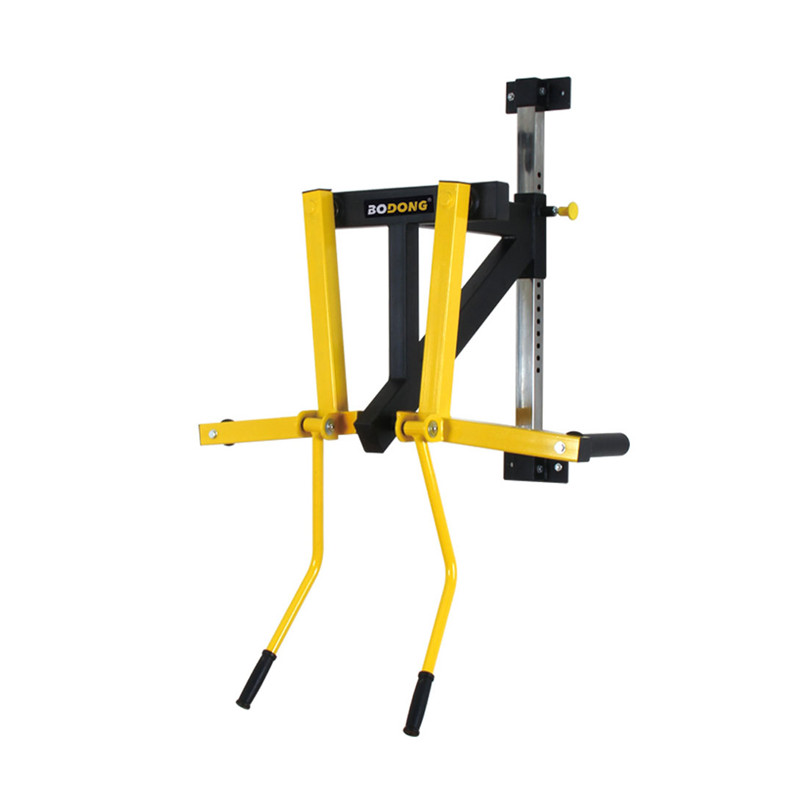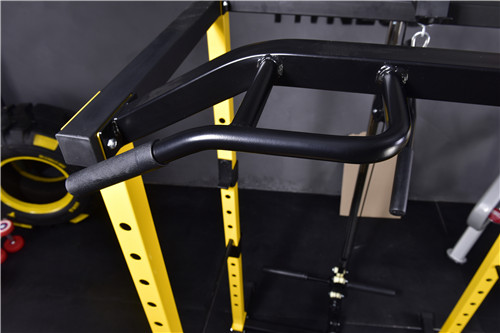If you want an indication of just how easily two types of fitness equipment can get confused, plug the term “squat stand” into a search engine. Once you’ve observed how many of the best power racks get drawn into your search results, conduct a similar search for “power rack” to see how many squat stands you’ll see.
Whether it’s the result of internet advertisers intentionally muddying the waters or natural confusion caused by the similarity, the result is the same. Power racks and squat stands remain two forms of weight training equipment often mistaken for one another, even amongst retailers you’d think would know better. 0.5 Kg Weight Plates

Identifying the differences between these high-quality strength training structures may help you better filter your equipment searches, address your home gym equipment needs, and potentially save hundreds of dollars at sporting goods stores.
If you’re confused about what exactly a squat stand is, there’s no need to feel ashamed about it. All it will take is a quick primer on the features of a squat stand, and you’ll have no trouble distinguishing one from other gym equipment. You will also be able to differentiate a squat stand from any other barbell-holding apparatuses you may encounter.
[Read More: Best Squat Racks for Beginners, Powerlifting, Small Spaces, and More]
A squat stand is identifiable for the simplicity of its design and function. It has two legs that extend from a stable steel base that rests upon the ground. This steel base is often referred to as a “foot.” The top of the squat stand may or may not possess an additional bar that provides a second point of connection and adds further stability to the stand’s two legs.
[Read More: The Complete Guide to Pre-Workout Supplements]
In addition to their basic frame, standard squat stands have evenly spaced holes running all along their length that are either ⅝-inch or one-inch in diameter. These holes are primarily intended to accommodate the pair of adjustable J-hook support holsters that come with the stand. At its core, these features compose the essence of what a squat stand is all about.
A squat stand offers a rudimentary, less-is-more approach to barbell workout stations. The simple, two-legged construction of a squat stand enables you to enter and exit from the workout apparatus without ever feeling as if you’re confined. You never have to limit the range of your movements when you’re training at a squat stand, and you’re also free to step as far away from the squat stand as necessary to complete your exercises.
Compared with similar devices, squat stands also tend to be less expensive due to their reduced size and complexity. This makes logical sense since the squat stand’s smaller footprint requires less material that might otherwise drive up the cost and allows for more floor space in your garage gym. As a general rule, the price of a basic squat stand will ordinarily be half to two-thirds of an equivalent power rack.
As made painfully evident by its name, a squat stand is a bit of a one-trick pony. Its intention is to be used almost exclusively as a stand for squatting and possibly some bench pressing, and any additional value extracted from one is often incidental. For example, while squat stands may be used to support a weight for bench press, this option is not always advertised or promoted. This is because a weight bench can not always fit neatly within the space of the squat stand due to the configuration of its supporting foot.
[Read More: The Best Full-Body Bodybuilding Workout for Beginner to Advanced Lifters]
If a support bar is present at the top of the squat stand, it may very well function as a passable pull-up bar, but this is often more of a byproduct of the design than a promoted feature. Also, when squat stands are in their most stripped-down form, they lack several safety features that come standard on more advanced equipment. This includes characteristics like pipe safeties or safety-spotter arms. Last but not least, odds are you won’t be able to store your weight plates on a squat stand so you may need a dedicated weight rack or plate tree.
A power rack (or power cage) has at least four legs extending from the ground, and depending on the model, it may even have six or more. All of these legs act in the service of a steel contraption that offers far more in the way of amenities and adaptability than a basic squat stand does. Generally speaking, if you find yourself doing the bulk of your lifting within the semi-confined space created by the training station, you’re probably working out at a power rack.
[Read More: Best Power Racks for Small Spaces, Folding, and More]
A heavy-duty power rack can support the weight of your workout by providing you with four or more steel legs, all of which have evenly spaced holes running along their length that are either ⅝-inch or one-inch in diameter. These holes can hold a large number of training accessories that can be inserted into the power rack, ranging from dip bars to training cables.
[Read More: The 12 Best Supplements for Muscle Growth]
Even the smallest and most basic power racks usually come standard with pin-pipe safeties. These strategically inserted pipes help prevent serious injuries by catching loaded barbells before they place you in a compromising position. Because the support of power racks is provided by beams that connect the legs laterally, there is usually ample space for a weight bench. This is not to say that power racks don’t have horizontal support bars that extend along the floor, but this is far less common.
Along with the added stability and space offered by a power rack comes versatility and nearly endless options for customization, as several training or safety attachments can be installed. In that respect, what may initially appear to be a four-legged squat stand can be transformed into a standalone home gym machine by selecting the right add-ons.
A power rack has ample space for you to slide any sort of bench, seat, or portable training device into its orbit, depending on whether you opt for a full rack or half rack. Also, aside from amenities like pin-pipe safeties, nylon safety straps, bodyweight dip attachments, and multifunctional pull-up handles, you can also insert weight-bar holsters and plate-storage rods to keep your bumper plates off the floor. This also makes it a convenient storage tool for stray free-weight equipment. Lastly, you should expect your power rack to be made from a sturdy 11 to 14-gauge steel.
Because it has at least four legs and supplies an enclosed training space, a power rack is three-dimensional in its arrangement. This creates an overall footprint for a power rack larger than you might initially realize, especially if you have limited space. While you can store equipment along its frame, it can be difficult to functionally store anything within its dimensions when your power rack is not in use. In other words, if you’re set on having a power rack at home, you’ll truly need room to spare.
[Read More: The Best Back Workout for Men, Women, Strength, and More]
Also, if you want to have the ability to freely move away from the structure while you train, a power rack may go above and beyond what you require. For some movements, a power rack might even train you to lean too heavily on the safety features it offers, as opposed to pushing your boundaries. You’ll want to rely on the safety features of the power rack to responsibly test yourself, as opposed to using those features as a crutch that permits you to bail out of challenging lifts too early.
It’s true that a power rack and a squat stand are usually made of the same materials, have similar designs, and are commonly made by identical manufacturers. Even so, several of the differences between them that may seem superficial at first can have massive implications on your barbell workout and your wallet.
An ordinary squat stand has two steel legs connected by a steel foot. Conversely, a power rack typically has four or more legs linked by steel bars that run along the floor to connect the legs along the lengths of the two longest, opposing sides.
A squat stand usually has nothing but air and opportunity between its foot and its lifters. A power stand offers lifters a confined space between its sets of legs, which can reduce your strength training space, but greatly increase the safety level of most heavy lifting sessions. This is accomplished through very stable protective features.
The squat stand and the power rack have plenty of holes where you can insert pegs and pins for accessory installations and adaptability. However, the added material and stability of the power rack make it a far more natural and reasonable place to install a wider variety of training extensions. Also, several fitness equipment manufacturers like Rogue, Titan, and even Amazon have several options to select from when designing your gym set-up.
With added materials and options come additional expenses. While you may be able to locate a premium squat stand that costs more than a specific power rack, more often than not, a power rack is going to be the more expensive of the two items by a significant margin.
If we were judging a competition between the squat stand and the power rack, the winner of the contest would be—you! The fitness renaissance has provided you with modern training options vastly superior to what was available at home and commercial gyms just one generation ago. The squat stand and the power rack will ensure that no matter what form of support your workout requires, the certainty that you will be supremely supported while lifting your heavy weights will never be in doubt.
Whether you opt to purchase a high-quality power rack or a squat stand can be dictated by several different factors. When making your decision, you will have to weigh the objectives of your training (ie, strength, Olympic, or powerlifting) against considerations like budget, preferred safety measures, and available floor space.
The term “squat rack” is a catch-all term that applies to both squat stands and power racks, which often causes confusion. It is also a way of referring to squat stands and power racks collectively for the sake of simplicity, and enables advertisers to promote them simultaneously. Therefore, both power racks and squat stands are consistently referred to as squat racks, but the two devices remain distinct when it comes to footprint, functionality, and cost.
Whether squat stands or power racks are better than one another is largely a matter of personal preference. If you enjoy having the freedom to train in open space without being boxed in, a squat stand will surely be more to your liking. On the other hand, if you enjoy the security of advanced safety measures or want a single structure to serve as an anchor point for your entire gym, a power rack should serve you well.
BarBend is an independent website. The views expressed on this site may come from individual contributors and do not necessarily reflect the view of BarBend or any other organization. BarBend is the Official Media Partner of USA Weightlifting.

Adjustable Abs Bench Have a question or comment? Get in touch: Email us: info[at]barbend.com